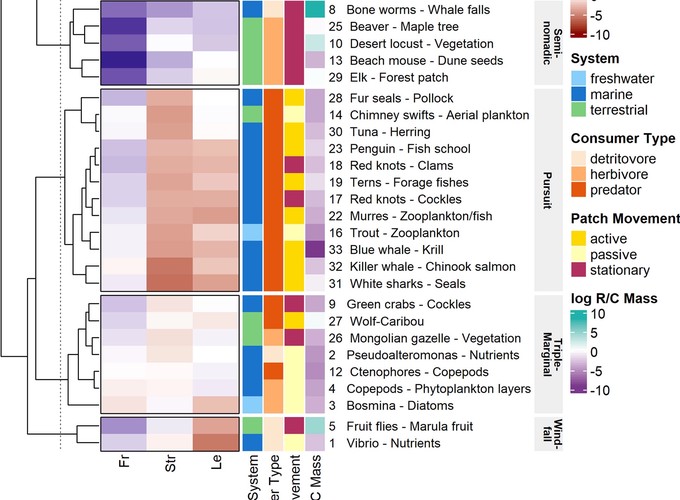 Image credit: Urmy et al 2022
Image credit: Urmy et al 2022
 Image credit: Urmy et al 2022
Image credit: Urmy et al 2022
From micro to planetary scales, spatial heterogeneity—patchiness—is ubiquitous in ecosystems, defining the environments in which organisms move and interact. However, most large-scale models still use spatially averaged ‘mean fields’ to represent natural populations, while fine-scale spatially explicit models are mostly restricted to particular organisms or systems. In a conceptual paper, Grünbaum (2012, Interface Focus 2 150–155) introduced a heuristic, based on three dimensionless ratios quantifying movement, reproduction and resource consumption, to characterise patchy ecological interactions and identify when mean-field assumptions are justifiable. We calculated these dimensionless numbers for 33 interactions between consumers and their resource patches in terrestrial, aquatic and aerial environments. Consumers ranged in size from bacteria to whales, and patches lasted from minutes to millennia, with separation scales from mm to hundreds of km. No interactions could be accurately represented by naive mean-field models, though 19 (58%) could be partially simplified by averaging out movement, reproductive or consumption dynamics. Clustering interactions by their non-dimensional ratios revealed several unexpected dynamic similarities. For example, bacterial Pseudoalteromonas exploit nutrient plumes similarly to Mongolian gazelles grazing on ephemeral steppe vegetation. We argue that dimensional analysis is valuable for characterising ecological patchiness and can link widely different systems into a single quantitative framework.